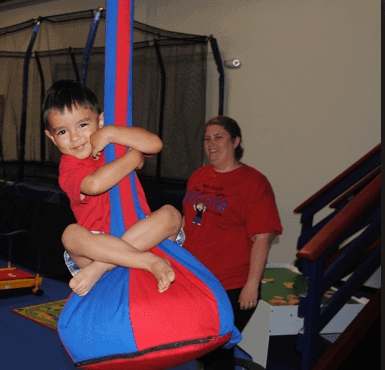What is Sensory Processing Disorder & Sensory Integration Therapy?

|
Getting your Trinity Audio player ready...
|
How do we use our sensory system?
People with typically functioning sensory systems learn to tolerate stimulation through their senses in many different ways. They also learn how to use the information they receive through their senses to control themselves and their movements and interact with the world around them.
For example, just as our eyes detect visual information and relay that information to the brain for interpretation and action (i.e., copying information from the blackboard or becoming excited when you run into a close friend), other sensory receptors pick up and relay information to the brain for interpretation and purposeful responses as well.
What is sensory processing disorder?
Even though a person’s sensory system is intact, they may have a sensory processing disorder (SPD), also known as sensory integration dysfunction.
What this means is that a person’s brain has trouble correctly processing the data it receives through the senses (e.g., sight, taste, touch, hearing, smell, movement, balance).
SPD is often found to be linked to other conditions such as autism spectrum disorder, Attention Deficit Hyperactivity Disorder, developmental and/or neurological disorders such as Fragile X Syndrome, Down syndrome, fetal alcohol syndrome, and even food allergies.
For some people, SPD may co-exist with these diagnoses. Others may have SPD as a stand-alone diagnosis.
Red flags of sensory processing disorder are unusual responses to touching and being touched, and/or to moving or being moved.
SPD can make everyday tasks and expectations difficult for those affected.
For instance, a child who has sensory processing difficulties may have trouble concentrating in school or participating in typical school-day activities.
Under-responsive or over-responsive sensory systems may cause a child to fear movement while using the playground equipment, have difficulty sitting in circle time, or have trouble transitioning from one activity or setting to another.
A student with sensory processing disorder may present with a high activity level, touch things constantly, or take excessive risks compromising their safety.
An occupational therapist can assess your child if you think they have difficulties due to sensory processing differences.
Occupational therapists can be found in public schools, in early intervention programs (for students younger than school age), or privately through insurance.
Parents or schools (with parental permission) can refer a student for an OT assessment.
If a child is determined to have sensory processing difficulties and be in need of occupational therapy (OT), the therapist can utilize sensory integration therapy to help them develop skills or strategies to adapt to and participate in activities that have been difficult for them.
What is sensory integration therapy?
Sensory integration therapy allows children to have planned sensory breaks and activities to help them develop and regulate their sensory skills in a structured way.
Research studies examining the effects of sensory integration therapy demonstrate promising results, such as increasing student goal attainment and decreasing disruptive behavior.
As an example of sensory integration therapy, an occupational therapist may guide a student through completing an obstacle course, playing on different kinds of swings, riding scooters, putting their hands in a box full of beads to find hidden objects, being squeezed or pressed with balls or rollers, being brushed, or following a sequence of moves to make a dance.
These activities and others can incorporate academic concepts such as numbers, shapes, or colors, and reinforce the use of language, allowing the student to have fun while developing key sensory processing skills.
For example, a student can solve math problems while swinging on a sensory swing or search for words on word tiles, in a box full of beads.
How can we integrate sensory activities into the school day?
Teachers can also ensure that the students receive sensory breaks or sensory input throughout the day.
For instance, bean bag chairs or yoga balls can be used for alternative seating during independent reading, stress balls can be used during listening tasks or independent work tasks, and students can take movement breaks to dance or stretch.
All of these strategies can help students with SPD in meaningful and natural ways, by helping their brains modulate the information received through their senses.
Occupational therapists can consult with parents and teachers to help them develop a toolbox of sensory integration techniques that can be applied in the classroom or at home.
Some schools have started to incorporate sensory rooms or sensory gyms with the help of occupational therapists.
Educationandbehavior.com – Keeping Adults on the Same Page for Kids








